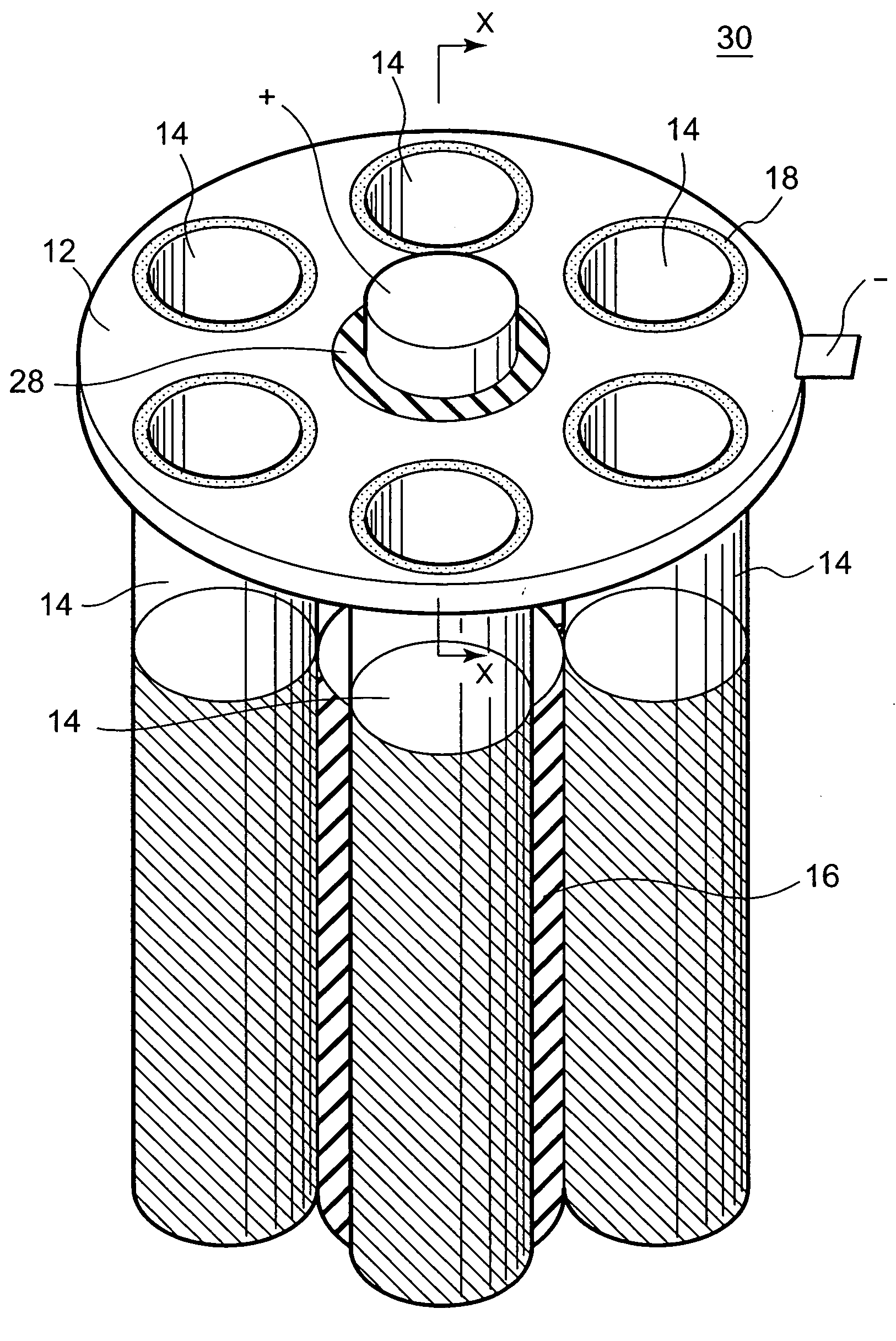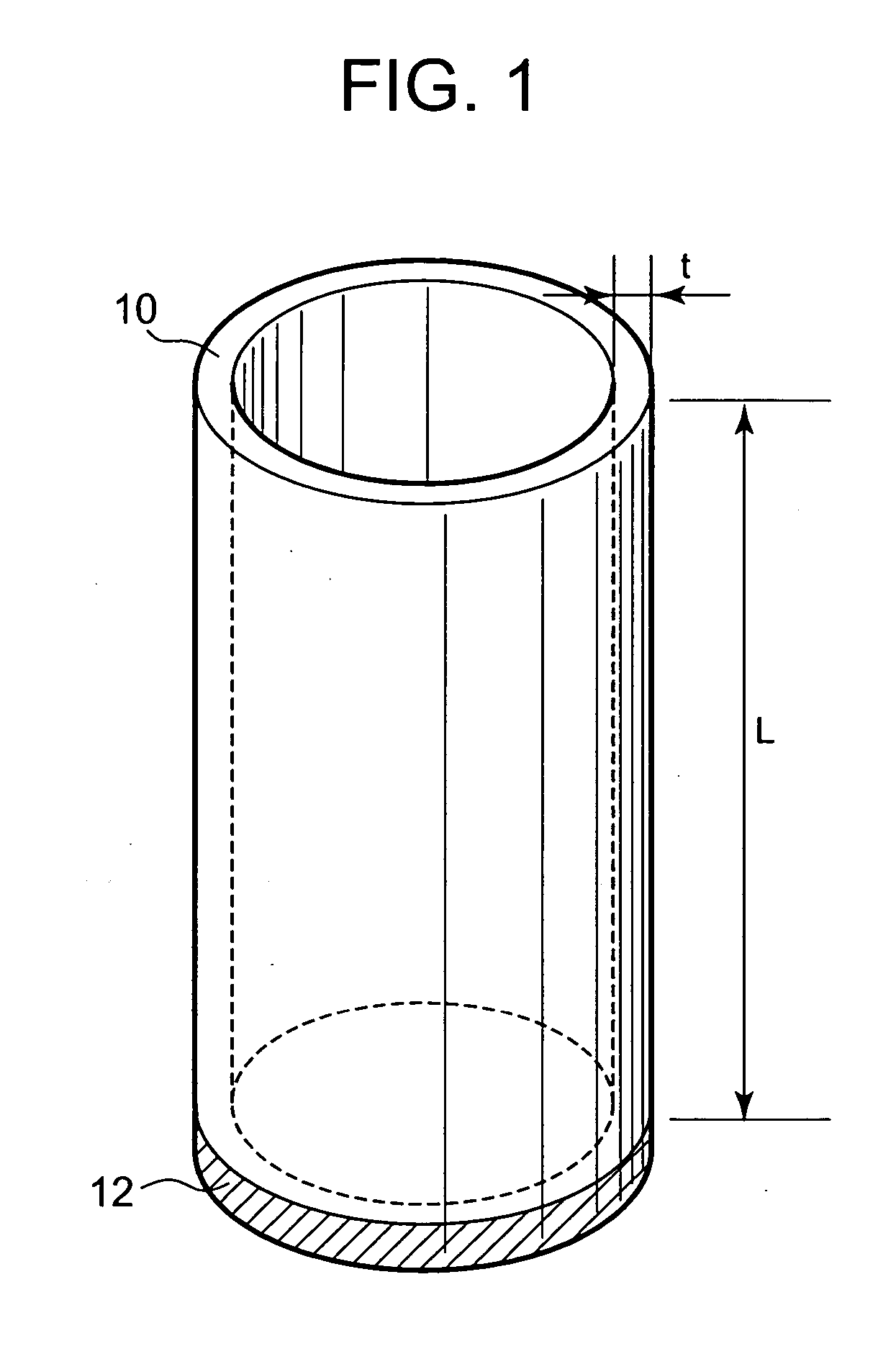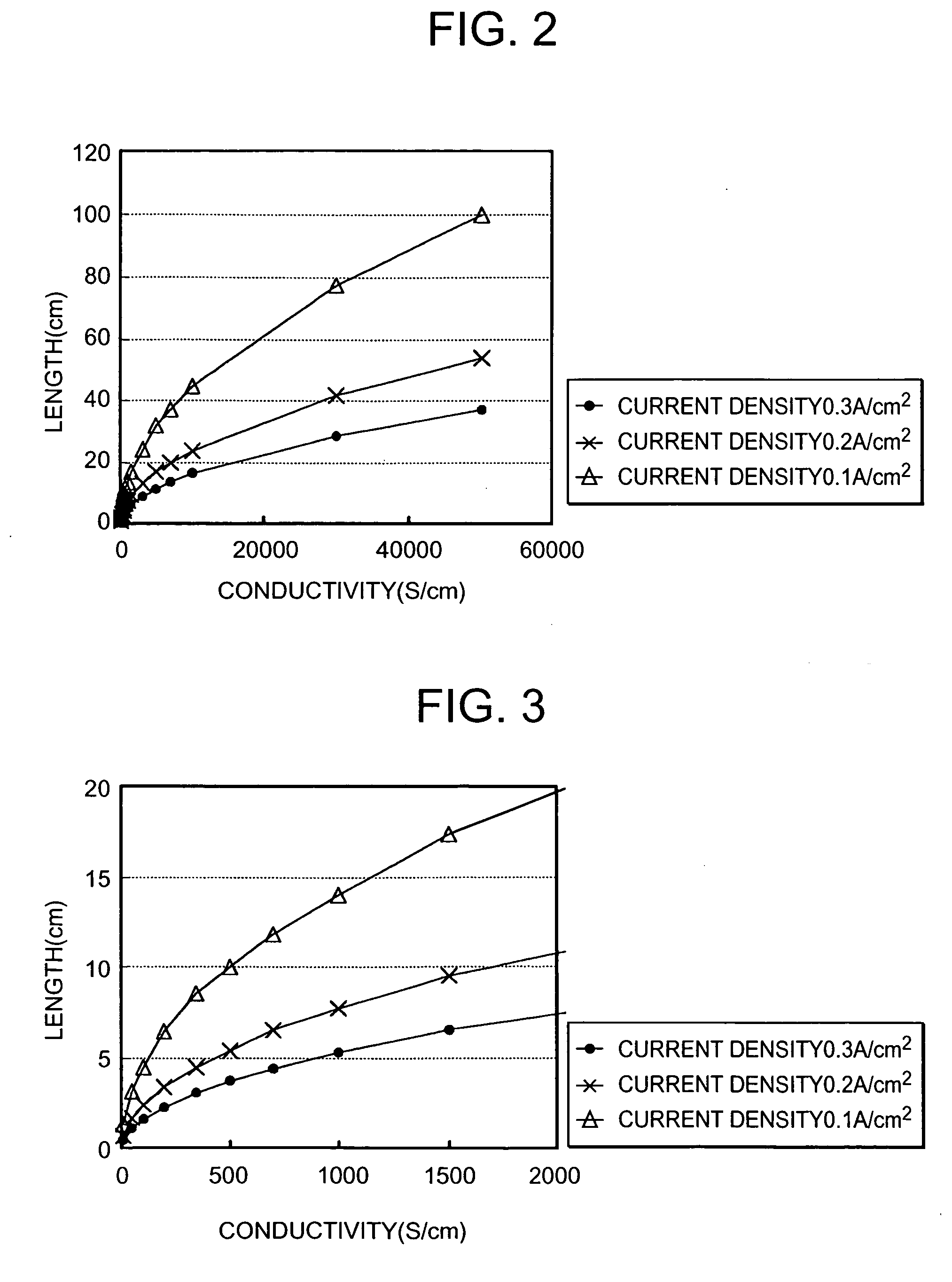Solid oxide fuel cell, solid oxide fuel cell assembly, solid oxide fuel cell module, and solid oxide fuel cell power generator
a fuel cell and fuel cell technology, applied in the field of solid oxide fuel cells, can solve the problems of power collection loss, easy cracking or peeling of the electrolytic layer, and difficult formation of the interconnector layer b>58/b> itself, and achieve the effect of high start-up performan
- Summary
- Abstract
- Description
- Claims
- Application Information
AI Technical Summary
Benefits of technology
Problems solved by technology
Method used
Image
Examples
embodiment 1
[0048] Embodiment 1
[0049] As shown in FIG. 1, in the case of collecting power from a power collecting section 12 at an end of a cylindrical porous metal substrate 10, a power collection loss occurs due to electric resistance in a longitudinal direction of the cylindrical porous metal substrate 10. Here, a relation between conductivity and a power collection loss of the cylindrical porous metal substrate 10 can be calculated as in the case of a method described in pp. 337 to 340, Electrochemistry 68, No. 5 (2000) by Taniguchi et al., if parameters are set as follows. [0050] L(cm): length of cylindrical porous metal substrate (but ½ of cylindrical porous metal substrate length if power collection is executed from both ends) [0051]σ(S / cm): conductivity of cylindrical porous metal substrate [0052] t(cm): tube thickness of cylindrical porous metal substrate [0053]ρ(Ω / cm2): 1 / (σ(S / cm)×t(cm)×1(cm) [0054] Re(Ωcm2): (electrolytic resistance+anode reaction resistance+cathode reaction resistan...
embodiment 2
[0070] Embodiment 2
[0071]FIGS. 7 and 8 are perspective and sectional views showing a constitution of an embodiment of the present invention. A reference numeral 12 denotes a first power collection member (metal plate), 14 denotes a single solid oxide fuel cell, and 16 denotes a second power collection member (power collection tube). A cylindrical porous metal substrate 18 of the single cell 14 is manufactured so as to obtain porosity of 40% by a method for mixing→kneading→extrusion→molding→drying→degreasing→in-vacuum sintering an alloy powder which contains HRE 5 by Hitachi Metals, Ltd. (registered trade mark, Fe—Cr—Al) and whose particle diameter is 10 to 100 μm with a binder. Since conductivity ρ of the cylindrical porous metal substrate 18 is 10000 S / cm, an outer diameter, a tube thickness and a length thereof are respectively 20 mm, 1.5 mm and 30 cm. By using this cylindrical porous metal substrate 18, an oxidant electrode 20, an electrolytic layer 22, and a fuel electrode 24 ar...
embodiment 3
[0090] Embodiment 3
[0091]FIGS. 12 and 13 are perspective and sectional views showing a constitution of another embodiment of the present invention. A cell 14 and two conductive metal plates 12 similar to those of the Embodiment 2 are mechanically and electrically connected together by a rod 32 put through a cylindrical porous metal substrate 18, whereby power collection is carried out on an oxidant electrode 20 side thereon.
[0092] In this case, power collection resistance can be reduced by arranging a conductive sealing material, e.g., a metal ring 34, between the cylindrical porous metal substrate 18 and the two metal plates 12.
PUM
 Login to View More
Login to View More Abstract
Description
Claims
Application Information
 Login to View More
Login to View More - R&D
- Intellectual Property
- Life Sciences
- Materials
- Tech Scout
- Unparalleled Data Quality
- Higher Quality Content
- 60% Fewer Hallucinations
Browse by: Latest US Patents, China's latest patents, Technical Efficacy Thesaurus, Application Domain, Technology Topic, Popular Technical Reports.
© 2025 PatSnap. All rights reserved.Legal|Privacy policy|Modern Slavery Act Transparency Statement|Sitemap|About US| Contact US: help@patsnap.com



